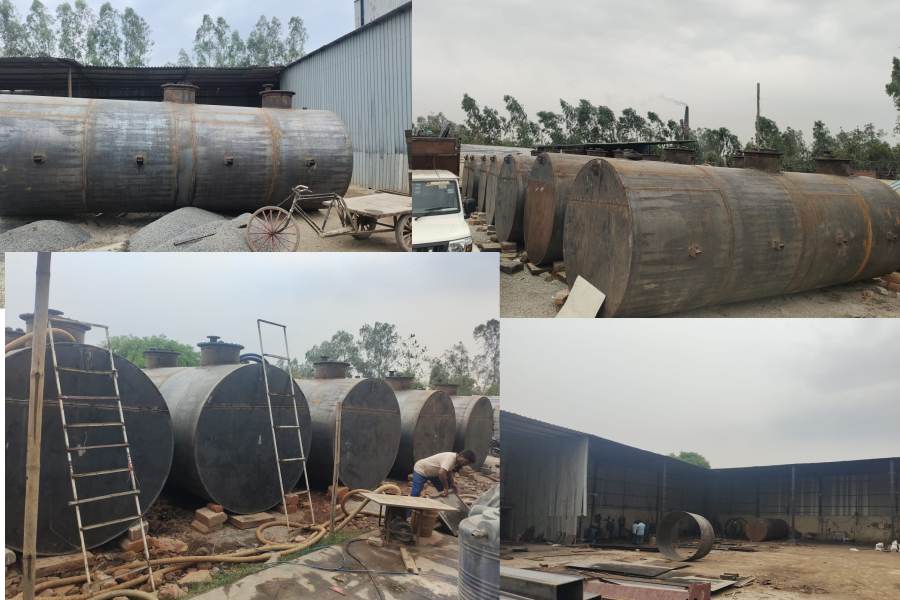
Tank fabrication refers to the process of constructing large tanks, typically made from steel or other durable materials, for storing or processing liquids, gases, or chemicals. These tanks can be used in a wide range of industries, such as oil and gas, water treatment, food processing, and chemical manufacturing.
The fabrication process involves several key steps:
1. Designing the Tank:
- Specifications: Determine the size, shape, material, and type of tank required (e.g., vertical or horizontal).
- Code Compliance: The design must adhere to relevant safety and industry standards (e.g., ASME, API, or UL codes).
- Stress Analysis: Engineers analyze the forces that the tank will face, including internal pressure, weight of the contents, and external conditions (wind, seismic, etc.).
2. Material Selection:
- Common materials used in tank fabrication include carbon steel, stainless steel, aluminum, and composite materials. The choice of material depends on factors like the type of stored substance (e.g., corrosive chemicals), environmental conditions (e.g., outdoor exposure), and required durability.
3. Cutting and Shaping:
- Plate Cutting: Steel or other plates are cut into appropriate sizes for the tank’s shell, bottom, and top. Methods like plasma cutting, laser cutting, or flame cutting are commonly used.
- Forming: The plates are then shaped (curved or bent) into the desired form, usually through rolling processes to create cylindrical or conical shapes.
4. Welding:
- Joining the Pieces: The shaped steel plates are welded together to form the tank structure. High-quality welding techniques, such as MIG, TIG, or stick welding, are used to ensure a strong, leak-resistant bond.
- Weld Inspection: The welds are thoroughly inspected, often with non-destructive testing (NDT) methods, such as ultrasonic testing or x-ray inspection.
5. Assembly:
- Shell Assembly: The tank’s shell is assembled, and the cylindrical form is attached to the bottom and top structures.
- Supports and Reinforcements: Additional structural supports (e.g., legs, nozzles, reinforcement plates) are welded onto the tank for stability and functionality.
6. Surface Treatment:
- Cleaning: The tank’s surface is cleaned of impurities and oils.
- Coating: A protective coating or paint is applied to prevent corrosion, especially for tanks exposed to harsh environments. This could include epoxy coatings, galvanizing, or specialized coatings for chemical resistance.
7. Installation of Components:
- Nozzles & Manways: Ports for inlet, outlet, venting, and sampling are installed, as well as manways for access inside the tank.
- Gaskets & Seals: To prevent leaks, gaskets and seals are placed around joints and nozzles.
8. Testing and Quality Control:
- Hydrostatic Testing: Tanks are filled with water to test for leaks and structural integrity under pressure.
- Pressure Testing: For tanks designed to withstand internal pressure (e.g., gas storage), pressure testing is done to ensure they meet safety standards.
9. Final Inspection:
- Compliance Checks: The finished tank is checked for compliance with the design and regulatory standards.
- Certification: Once approved, the tank is certified for use and ready for transportation or installation at its final location.
10. Transportation and Installation: If the tank is large, it might need to be transported in sections to be assembled at the installation site.
